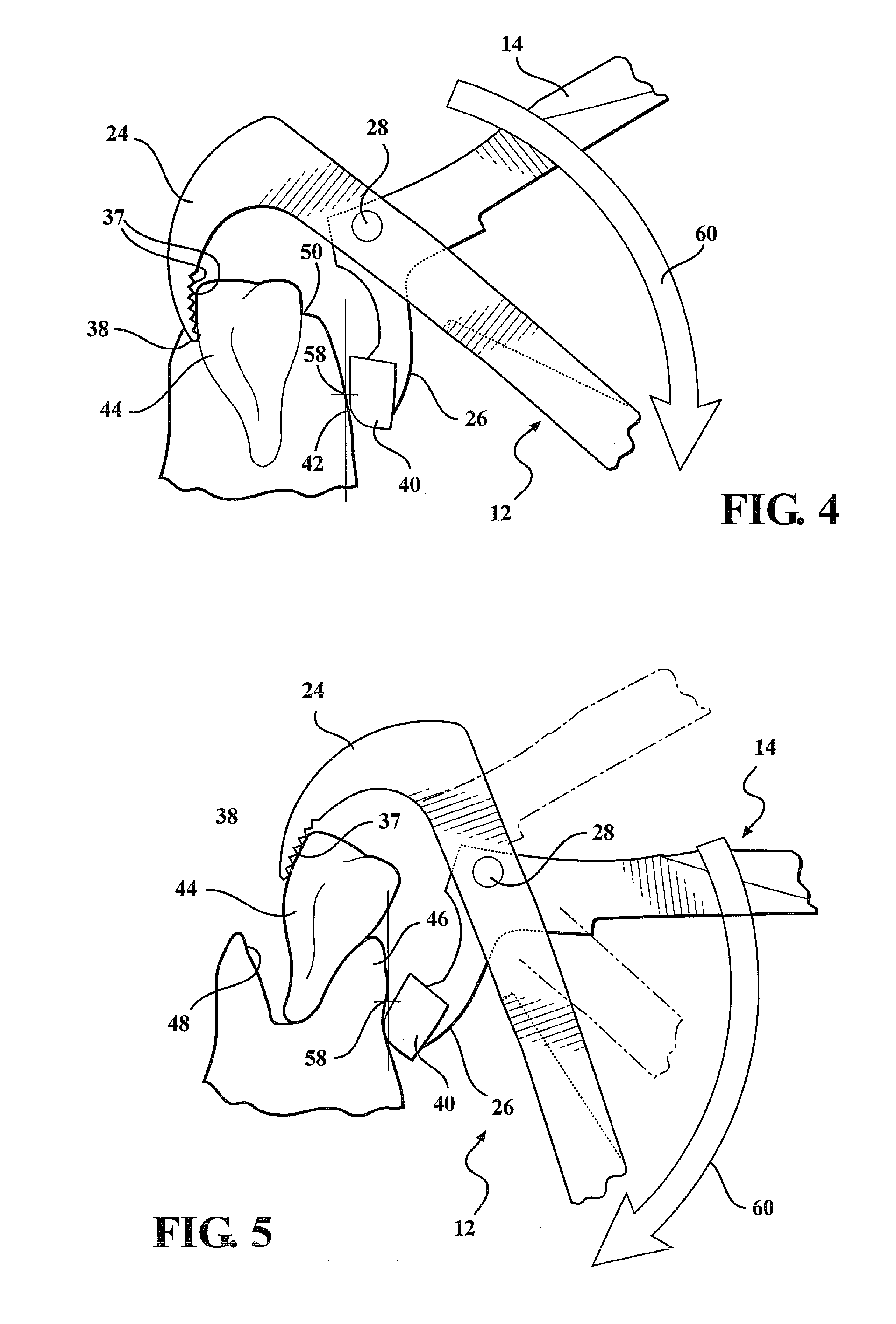Dental plier design with offsetting jaw and pad elements for assisting in removing upper and lower teeth utilizing the dental plier design
- Summary
- Abstract
- Description
- Claims
- Application Information
AI Technical Summary
Benefits of technology
Problems solved by technology
Method used
Image
Examples
Embodiment Construction
[0024]Referring now to FIG. 2, a pair of dental pliers is illustrated at 10 according to a first preferred variant of the present invention for use in loosening teeth located along a lower jaw line of a patient. As discussed previously, the dental appliances according to any of the design variants disclosed herein is an improvement over prior art dental pliers and forceps in that it facilitates providing an outward directed and rotating force, rather than a pulling force, applied to a selected tooth and in order to more quickly and efficiently loosen the interface between the tooth root from the patient's gum line and bone.
[0025]As further described, the present invention is an improvement over prior art dental appliances (pliers and / or forceps) in that the intentional offset or misalignment of the jaw and the pad (or support) allows a greater and more efficient rotating force (and as opposed to a conventional pulling or withdrawing force) to be exerted directly upon the tooth, such...
PUM
 Login to View More
Login to View More Abstract
Description
Claims
Application Information
 Login to View More
Login to View More - R&D
- Intellectual Property
- Life Sciences
- Materials
- Tech Scout
- Unparalleled Data Quality
- Higher Quality Content
- 60% Fewer Hallucinations
Browse by: Latest US Patents, China's latest patents, Technical Efficacy Thesaurus, Application Domain, Technology Topic, Popular Technical Reports.
© 2025 PatSnap. All rights reserved.Legal|Privacy policy|Modern Slavery Act Transparency Statement|Sitemap|About US| Contact US: help@patsnap.com



